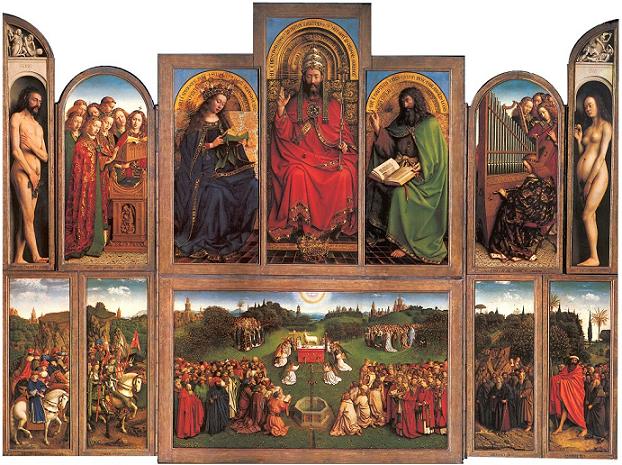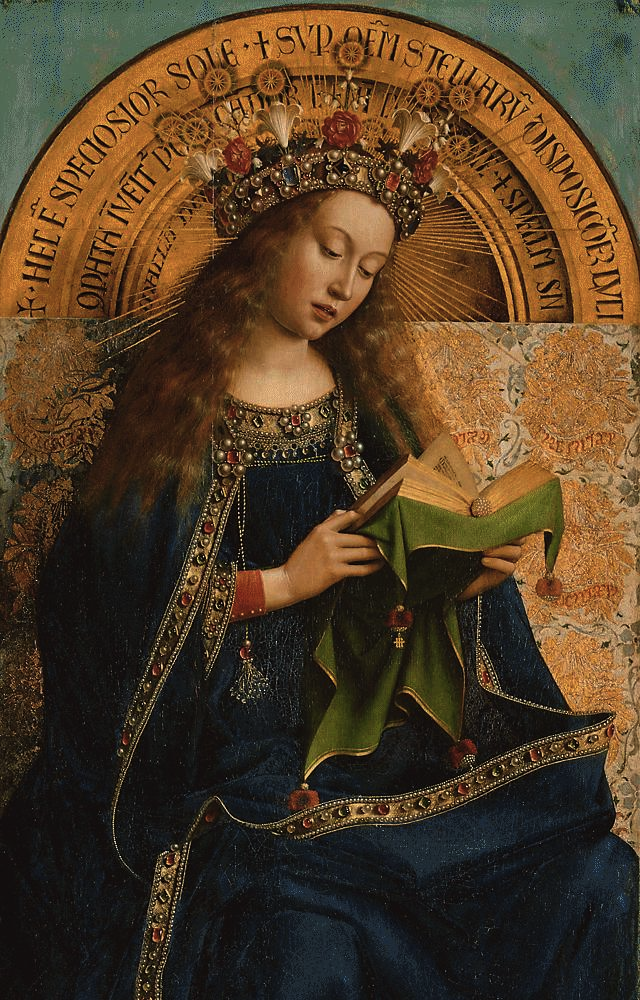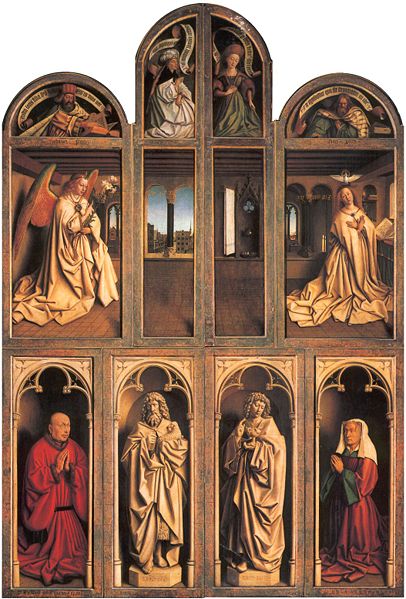
LIFE AS MYTH
![]()
JOURNAL
![]()
LIFEWORKS
![]()
ATLAS
![]()

SUMMER 2014
A VOCABULARY OF GRACE
The Ghent altarpiece (clockwise from top full interior; exterior gates; detail of Deesis, Mary as Queen of Heaven) also known as Adoration of the Mystic Lamb or The Lamb of God. Hubert and Jan Van Eyck. 1432. Cathedral of Saint Bavo. Ghent, Belgium.
But the obvious dynamism of these extravagant figures lies in the fact that they come alive in the dialectics of what is hidden and what is manifest.
Gaston Bachelard, The Poetics of SpaceJan Van Eyck [c. 1395 - 1441] was a Flemish painter, considered one of the finest artists of the 15th century and also known as the "father of oil painting". Though the use of oil-based painting predates Van Eyck by several centuries, he and his brother, Hubert, were the earliest to use it for panel painting and to create extraordinary effects through the mastery of glazes, wet-on-wet and other painterly techniques. The earliest source on Van Eyck is a biography [1454] by Bartolomeo Facio. He describes the painter as one of the best artists of the 15th century and an educated man grounded in the classics.
Van Eyck's most celebrated work, The Ghent Altarpiece, also known as The adoration of the mystic lamb, was a commission from Jodocus Vijdts and his wife Elisabeth Borluut for the Saint Bavo Cathedral in Ghent, Belgium. There is some question as to which Van Eyck, Jan or his brother Hubert, can claim credit for the this masterpiece. Hubert began the commission but died in 1426, long before the work was complete.
A clue to the dual partnership was in the original frame, subsequently destroyed during the Reformation. Jan Van Eyck often signed and dated his works on their frames. In the case of the Ghent altarpiece, records indicate that the frame bore an inscription which read that Hubert maior quo nemo repertus [greater than anyone] began the piece and Jan arte secundus [second best in the art] completed it. The "signature" is ambiguous as to the exact contribution of each brother and art historians are in disagreement.
Van Eyck died in 1441 and was buried in the Church of St. Donatian. Unlike his brother Hubert, a substantial amount of Jan Van Eyck's work survives him.



